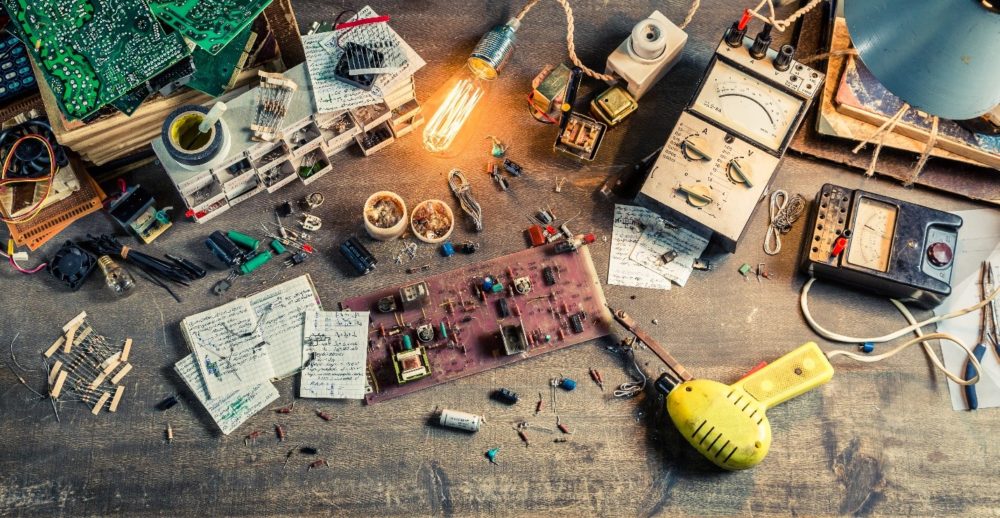Discarded electronics time and time again keep ending up in landfills. The solution? Recycle more. Read more to learn about techwaste recycling solutions
The United Nations is trying to sound the alarm about a fast-growing health and environmental concern. It’s a problem that poses risks to our soil, groundwater, and even the air we breathe.
And this growing health and safety concern is linked to something very close to home for most of us: our electronic devices.
First of all, the UN released a report on the problem of discarded electronics. And the agency urged an increased investment in better electronics recycling. Because those devices pose hazardous risks to the environment if they’re throw out with regular trash.
The agency has issued a comprehensive study conducted by the International Solid Waste Association. It highlights the threat that electronic waste poses to the environment and public health.
It also outlined a rising trend in the improper and unsafe treatment and disposal of e-waste. That includes through methods like burning and dumping.
The Solid Waste Association is urging that efforts to promote the recycling of e-waste be enhanced globally. Without it, they warn, the environmental risks from e-waste will only get worse.
That means an educational approach is needed as well. It would encourage people who replace their electronic device for a newer version not to throw it out. Instead they should take it to a recycling firm like Great Lakes Electronics Corporation. That way, the parts within it can be used to make new products. The same is true for businesses that have used electronics like office computers, fax machines, and scanners that they want to replace.
Because as the UN noted, advanced technologies in the manufacturing of electronics means people are replacing their devices more quickly than ever. And that’s produced a steady stream of e-waste, far too much of it heading to community landfills.
Why is this a Growing Concern?

A joint report by the UN’s International Telecommunication Union, the UN University and the International Solid Waste Association used numbers to back up their concerns. They noted that more than 44.7 million tons of e-waste was generated around the world in 2016. That’s an increase of 8 percent from 2014.
And the report cautioned that those numbers are virtually certain to increase. By 2021, there could be 52.2 million tons of e-waste worldwide. This comes at a time when most e-waste still ends up at dumpsites or incinerators. Only 20 percent – an estimated 8.9 tons, the report stated – is getting recycled.
The report called e-waste management an urgent issue in today’s digitally dependent world.
And the reason for the increase, they note, is that electronic devices are becoming more accessible worldwide. Prices are falling. More people are purchasing and relying on digital devices.
First of all, today half the world’s population uses the internet. And there are more than 7.7 billion people with active mobile cellular subscriptions and 4.2 billion with mobile broadband subscriptions.
As the report noted, if those numbers sound high, there’s far more e-waste likely to get generated in the future. That’s thanks to advanced technology rolling out new versions more frequently.
From an environmental prospective, this is a troubling trend. It’s been well documented that used electronics contain toxic materials like mercury and lead. They can pose major risks to the soil and groundwater if they end up in landfills. Once those hazardous materials seep into the ground and water, they become contaminated and pose health risks to people and wildlife.
Finding Solutions to E-waste Management through Recycling
The report noted that there’s a need to increase global awareness of this challenge. The good news, as the report indicated, is that currently 66 percent of the world’s population, living in 67 countries, is covered by national e-waste management laws. That’s up significantly from 44 percent in 2014.
And one of the top priorities moving forward will be to promote recycling, which not only helps the environment worldwide, but also creates jobs within the growing recycling sector.
Because there’s a strong economic argument for increased recycling rates. As the Solid Waste Association report pointed out, the total value of all raw materials present in e-waste, including gold, has been estimated to be worth around $64.6 billion, a figure that exceeds the national economies of some nations.
Furthermore, low recycling rates have an economic as well as environmental toll, the report noted. The negative economic impact comes from the loss of those recoverable materials – including silver, copper, platinum, and palladium – which can help reduce the cost of producing new products. That also helps keep prices down for new products built used recycled materials.
Last year, the ITU, UNU and ISWA joined forces to launch the Global Partnership for E-waste Statistics. Their objective is to help countries produce e-waste statistics to convince countries to invest more in recycling, while also building a global e-waste database to track developments in this field.
Most importantly, this partnership also hopes to map recycling opportunities from e-waste that help countries identify best practices of global e-waste management.
Techwaste Recycling Solutions
Today, across the globe, consumers are making the transition into a more digital world. While this technology has made the lives of millions of people worldwide much easier and safer, a by-product of this trend is that e-waste is becoming a bigger and bigger challenge.
And now the issue is whether we can work together to find the proper solutions for e-waste management and help guarantee a sustainable future for ourselves and our environment.
Because experts agree that the best solution is to increase recycling rates for ewaste, which keeps these products out of landfills and ensures the materials inside them can be reused for new making new products.
Great Lakes Electronics Corporation specializes in electronic recycling and has years of experience performing environmentally friendly recycling of electronic products. The team at Great Lakes Electronics will disassemble these items into component parts, and the ones that still have value can be sold for reuse. Other parts are used for metals recovery, and everything is recycled.
In conclusion, call Great Lakes Electronics today at 888-392-7831 to request or quote or get more information.

